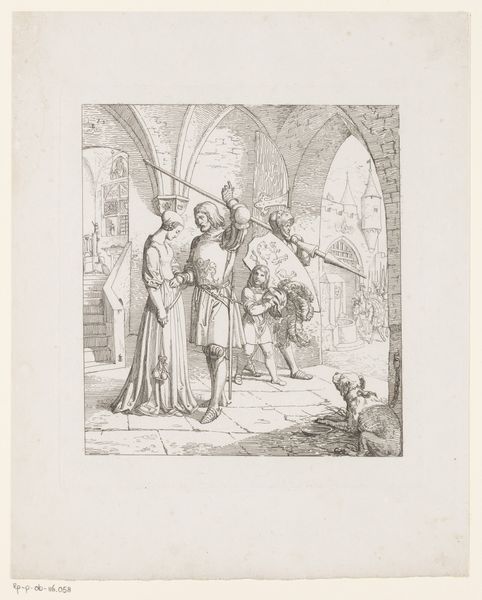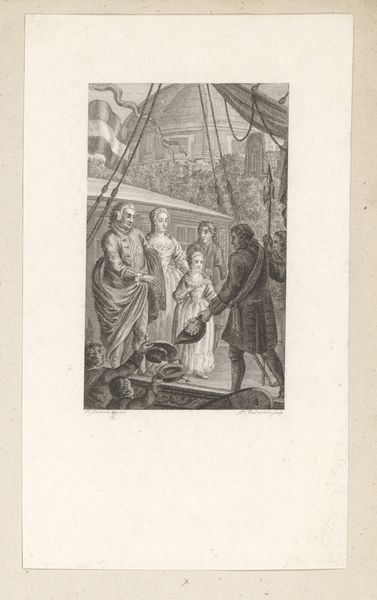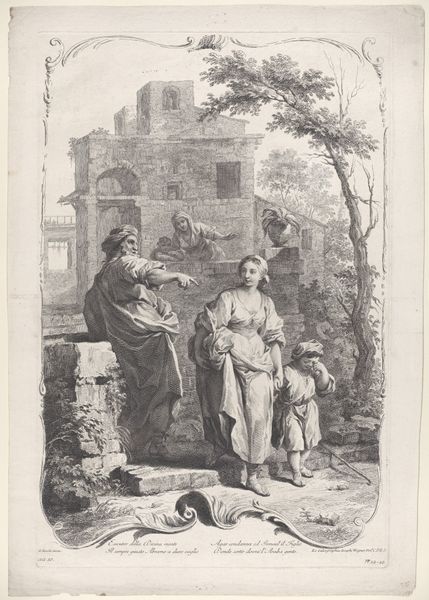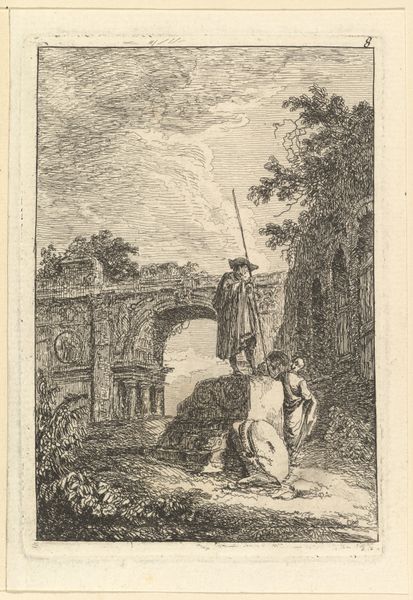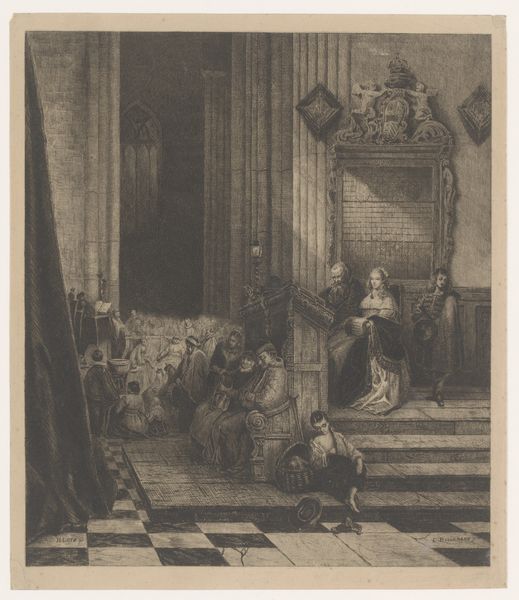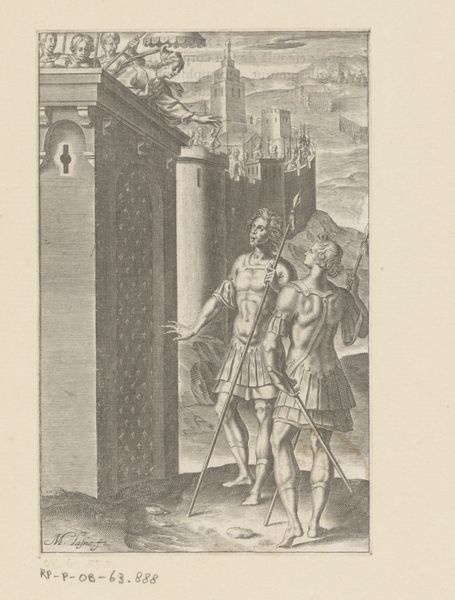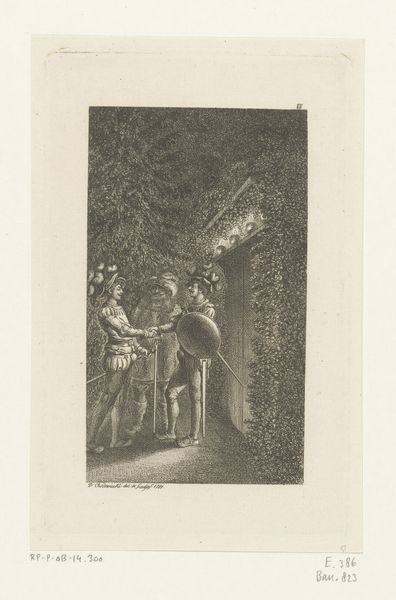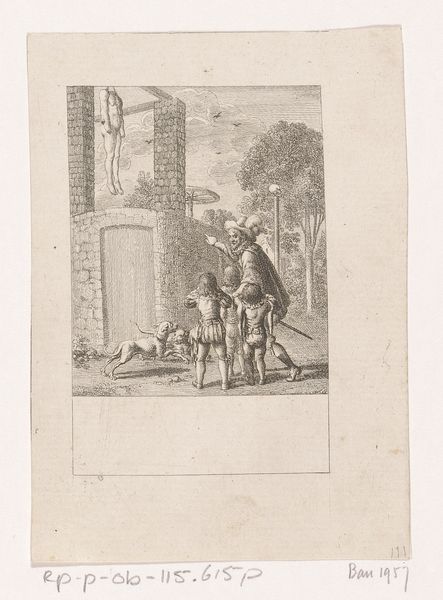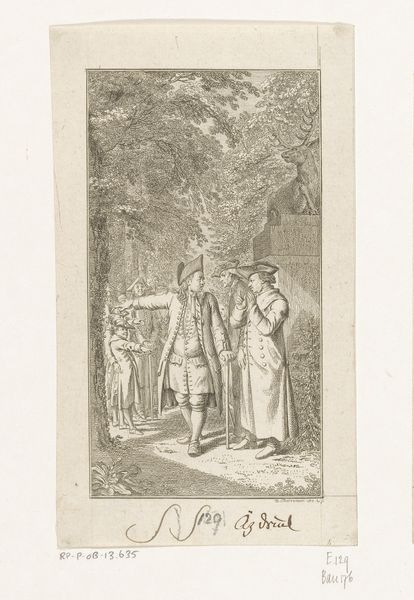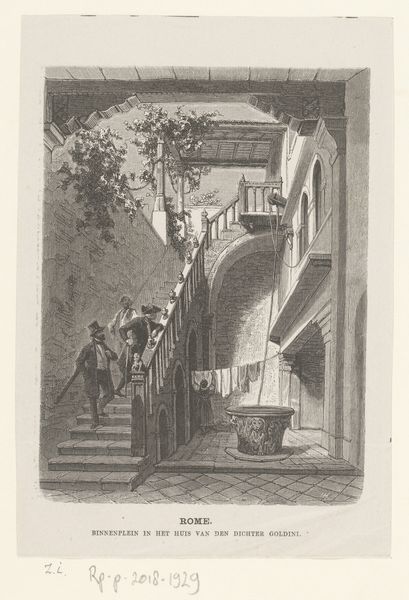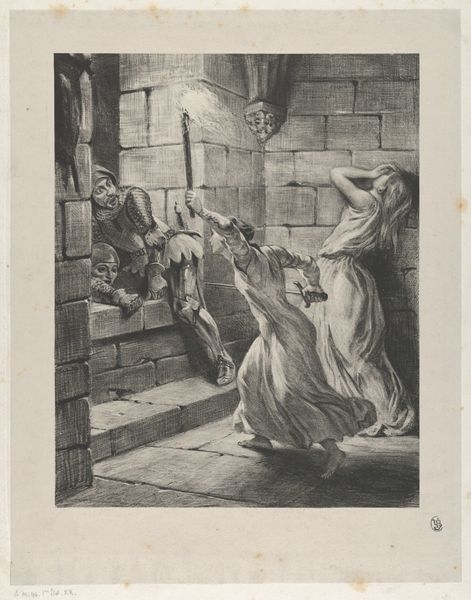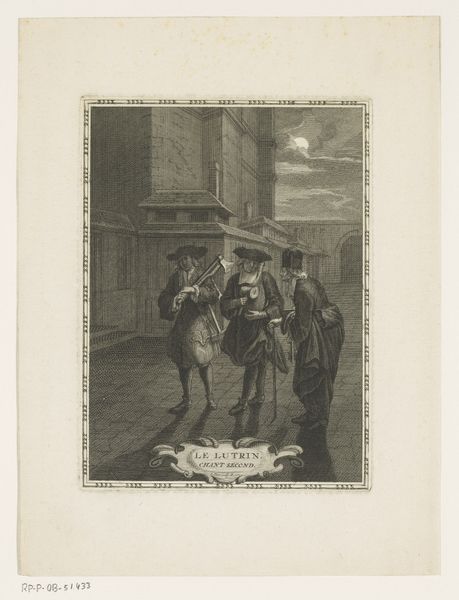
Gustaaf Adolf van Zweden krijgt een teken van hogerhand als hij Landshut binnen gaat 1796
0:00
0:00
danielnikolauschodowiecki
Rijksmuseum
drawing, print, engraving
#
drawing
#
light pencil work
#
narrative-art
# print
#
pencil sketch
#
light coloured
#
old engraving style
#
figuration
#
romanticism
#
line
#
history-painting
#
engraving
Dimensions: height 210 mm, width 130 mm
Copyright: Rijks Museum: Open Domain
Editor: So, this is "Gustaaf Adolf van Zweden krijgt een teken van hogerhand als hij Landshut binnen gaat," made by Daniel Nikolaus Chodowiecki in 1796. It’s an engraving, and it has this old engraving style… it feels very… serious. All these figures in dark robes and armour. What exactly is going on here? What's your read on this artwork? Curator: Well, at first glance, it seems like a simple historical scene, right? But let's consider the power dynamics at play. Chodowiecki made this during a period of immense social upheaval. The imagery of divine intervention – that jagged line from the heavens – was often used to legitimize authority, but was it actually reflective of the people's needs? Consider the ways religion and power are intertwined here to shape perception. Editor: That’s interesting… So the "sign from above" might not just be a symbol of divine blessing? Curator: Exactly. Think about the historical context. Gustav Adolf was a major figure in the Thirty Years' War, a conflict with profound religious and political dimensions. The "sign" might also represent the forces manipulating him, not necessarily a deity but factions seeking control. Look at who's depicted and who isn't. Whose stories are prioritized and whose are silenced? Editor: So, it's almost a commentary on how rulers manipulate symbols for their own gain? It’s not just a straightforward heroic image? Curator: Precisely. And by understanding the nuances, we question these established narratives and consider the diverse experiences within the dominant historical record. Think about whose perspective isn't shown, who's being left out of the triumphant parade. Who gets to write history? Editor: I never thought of it that way. It really makes me think differently about historical artworks and how they were used as propaganda! Curator: Art can reflect, reinforce, or subvert existing social structures. Considering art through this lens gives voice to marginalized communities by questioning how those structures are maintained or challenged by such a work.
Comments
No comments
Be the first to comment and join the conversation on the ultimate creative platform.
